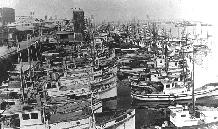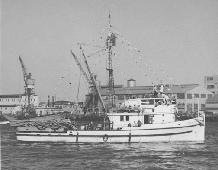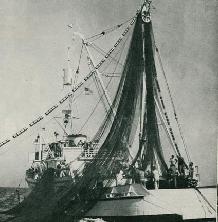 |
| Tuna Clippers at Fish Harbor, Terminal Island, nd. c. 1926. ~ Los Angeles Public Library |
|
| The Fishermen
Licensed fishermen in 1936 numbered 7000. Of those 2600 were born in the United States. The three next largest groups were 1400 Italian Fishermen, 900 Japanese fishermen, and 825 Yugoslavian fishermen. By 1950, when the U.S. Department of Fish and Game no longer recorded place of birth in their census, there were 15,000 licensed fishermen, 140 were born in Italy and 700 in the former Yugoslavia.
Not since 1941, when Japanese and Japanese-Americans were interned during World War II was there a tally of Japanese fishermen.
|
Following the Fish
Italian and Croatian families already in the United States from fishing hubs along the west coast – Tacoma, Seattle, San Francisco and Monterey - relocated to the Los Angeles harbor. Fishermen and their families were following the movement of sardines as well as looking for a place that felt more like the Mediterranean. Both the Italians and Croatians brought specialized net fishing techniques and a legacy of knowledge of skinning and cleaning fish.
|
 |
| The Adriatic, a Purse-Seiner, nd, c. 1950. ~ Matich Family Collection. |
|
|
 |
| Purse Seiner at sea, 1962. ~ Star Kist Story, corporate booklet, Matich Family Collection. |
|
| Catching the Fish
"Molla!" calls the fisherman to cue the crew to unfurl the seining nets. Molla is Italian slang for, Get Moving! Heard on most fishing vessels in the Los Angeles Harbor, it reflected the origins of net fishing. Fishing villages on the Mediterranean and Adriatic coasts had developed a drawstring-like purse-seining technique for bringing in large catches.
Originally, purse seining was limited to the strength of the net material and the range of the boat. Tuna fishing was primarily done from tuna clipper bait boats by fishermen who fished with long poles. The production of nylon changed this. By 1961, purse-seining from larger purse seiners was the preferred technique for commercial tuna fishing.
|
|
|